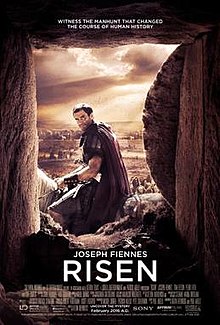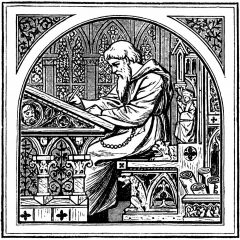As part of my Methodist Local Preacher training, we are called upon to examine and analyse various theologically-related themes and to write a reflection on how and why it shapes not only our core belief but also to our calling to preach the Gospel.
Poetry, music and art have traditionally been used to depict faith and religious belief since the dawn of time and were considered part of the contemporary culture of their respective ages. Since the arrival of cinematography, faith-related themes have featured in the contemporary culture of our own time, many telling the story of Jesus and the influence of Christianity through feature film or television series. Examples include recent films such as Martin Scorsese’s Silence (2016), telling the story of the persecution of Christian missionaries and their converts in medieval Japan or Franco Zefferellis 1977 TV serial, Jesus of Nazareth, alongside more controversial examples such as The Last Temptation of Christ (1988) also by Scorsese, and Mel Gibson’s graphic account of Christ’s crucifixion in his 2004 film, The Passion of the Christ.
For my own analysis of an item of contemporary culture I chose the film RISEN also from 2016, looking at how a particular aspect of faith was depicted within a specific genre and reflecting on the likely impact not only on people of faith, but also those who profess no faith but might be curious to know more. I have re-produced a shortened version below including where applicable, biblical references used in the story.
Film: RISEN running time 1hr 43mins
The actor Joseph Fiennes has played many historical characters throughout his film career from Robert Dudley, the Earl of Leicester in Elizabeth (1998) to Martin Luther in Luther (2003) and as Olympian Eric Liddle in On Wings of Eagles (2017), the story of Liddle’s life after the 1924 Olympics as a Chinese missionary, and his eventual death in a Japanese internment camp in 1945.

In this 2016 film he plays a fictional character at the centre of arguably the greatest of all historical events, the Crucifixion: followed by the mystery surrounding the resurrection and ascension of Jesus into heaven. Fiennes himself describes the story in the special features section of the DVD as a murder mystery becoming a theological mystery, while co-star Tom Felton, says that the film shows how the power of faith can change people forever.
Risen is the story of the resurrection told through the eyes of a Roman Tribune (senior military officer) named Clavius, (Fiennes) who along with his assistant Lucius (Felton), is tasked by Pontius Pilate (Peter Firth) with finding out what happened to Jesus (Cliff Curtis) following his death on the cross which both men had been ordered to supervise along with the sealing of the tomb after his burial.
Political intrigue between Roman prefect Pilate and High Priest Caiaphas and the contempt they generally hold each other in is evident throughout the story. The Sanhedrin are fearful of the prophecy that the Son of Man will rise from the dead on the third day and the impact it may have on the population. Pilate therefore orders Clavius to place a guard around the tomb until the third day to pacify the Sanhedrin (Matt: 27: 62-66). When the tomb is eventually found to be empty, the fate of both men depends on Clavius succeeding in proving that Jesus’ body was indeed stolen by his followers in order to proclaim the prophecy of the resurrection.
From here the story follows Clavius and his search for what he believes is a missing corpse because he himself saw the dead Christ nailed on the cross. Later through use of paid informers, Clavius obtains names of several of Christ’s followers including Mary Magdalene whose account of reporting the empty tomb is taken from Matt 28:1-10. She is still depicted as a woman of the street, well known to many of the local garrison and eventually they track her down but she refuses to answer any questions other than to re-tell her story of the empty tomb.
Another interesting thread woven into the story is that of the Roman soldiers tasked with carrying out the crucifixion itself. They are later delegated to guard the tomb and form an integral part of the events described in Matthew 28:11-15. Upon being questioned by Clavius still searching for Jesus’ remains, one of the guards confesses that they were paid by the Sanhedrin to say the body was stolen but later admits that after they had fallen asleep they were awakened by a flash, the ropes used to seal the stone at the tomb burst, the stone rolled away on its own, the sun rose in the tomb itself and a figure appeared. Clavius is unable to find a reasonable explanation for these events, but sees the psychological effect it has had on the guard which in turn has led to his drinking to excess to try and blot out the memory. A search of cemeteries by exhuming remains of recently buried people produces a corpse carrying the marks of Crucifixion, but as it is impossible to identify the facial features as that of Yeshua, the search continues.
During a subsequent house to house search Clavius discovers the disciples and Mary Magdalene with a man who looks like the dead one he saw crucified. Ordering his men to stand down he enters the house where Jesus calls him by name telling him, “There’s no enemies here”. Clearly mystified by events, Clavius sits at the back of the room observing the joy of the disciples being with a man he believed dead. This account is taken from John 20:26-28, as it includes the arrival of Thomas who sees the wounds from the cross and then believes it is Jesus who is among them.
When the disciples decide to go to Galilee, Clavius decides to follow the disciples to ascertain the truth of what he has seen, to understand how a man he knew was dead could come back to life again and why people should follow this Yeshua in the way that they do. Leaving a note for his men he orders them not to follow him nor persecute others using his name. Upon discovery of the note Pilate disowns Clavius and orders Lucius to hunt them all down, but Lucius himself begins to wonder if the story might well be true.
After reaching Galilee the story takes up with the passage from John 21:3-8, describing how after a fruitless night fishing the disciples notice but do not immediately recognise Jesus when he tells them to re-cast their nets. Again the joy of the disciples is unbounded when they recognise their leader which Clavius again witnesses but struggles to comprehend. The disciple Bartholomew who Clavius had interrogated earlier, attempts to provide the answer when he tells him that they too had their doubts when Yeshua told them of his death and resurrection after three days, but they have since seen the truth of what the scriptures foretold. Clavius decides to warn Peter that Jesus represents a threat to the established order and the likely consequences, but Peter and his companions do not seem to be concerned because of their faith in the risen Messiah.
The Ascension scene includes words taken from four different bible sources when Jesus addresses his disciples-;
I go to prepare a place for you – John 14:3 / Go, to all the world and preach the Gospel to all nations – Mark 16:15 / You will be my witnesses in Jerusalem and all Judea and Samaria and unto the ends of the earth – Acts 1:8 / Know that I am with you always – Matt 28:20, after which Jesus is shown walking into a shaft of bright light and then disappearing. The disciples feeling energised decided to return to Jerusalem (Luke 24:52) inviting Clavius to go with them. He however decides to go his own way knowing he is a marked man for failing in his mission.
The final scenes show Pilate on being told that the search for the disciples was unsuccessful remarking, “I doubt we will hear from them again”. The film ends as it began with Clavius telling his tale to the innkeeper where he rests while wandering in the Judean desert. When the Innkeeper asks him does he truly believe all he has seen, Clavius responds, “I believe I can never be the same”.
By setting this version of the events surrounding the Crucifixion and Ascension within the detective genre, it is possible to imagine much of what is depicted in the film to have actually taken place. Use of the various Gospel accounts weaving them into a single story while keeping faith with the texts, is key to understanding what for Christians is the central tenet of our faith: the death, resurrection and ascension into heaven of Jesus Christ.
The film allows the main character, Clavius, to be transformed by the events he has witnessed but also to find redemption. Having been tasked with supervising Christ’s killing when he does meet Yeshua, there is no bitterness or desire for revenge either from him or the disciples. Love is indeed the only weapon they wield.
Faith is about making changes within yourself, to seek and live a new way of life. For those who profess not to believe in a faith, Risen does answer many of the historical questions about events in Jerusalem some two millennia ago. But it also helps those of the faith, understand a little bit more about Jesus’ time on earth and why the bible is a book of history as much as a book of faith, but written for its time not ours.
What the film helps to show is that faith can change people forever as Tom Felton remarks in his interview in the special features. We see this in the disciples who share Jesus final hours at Galilee and in the faith shown by Mary Magdalene despite her reputation as a fallen woman, for it was to her that Christ appeared when he arose not Peter.
It shows that there is a Clavius everywhere even today, just waiting for that moment when it is possible to put aside doubts and scepticism and come to believe in the person of Jesus and what he represented to so many people then, and continues to represent to millions of people today.
